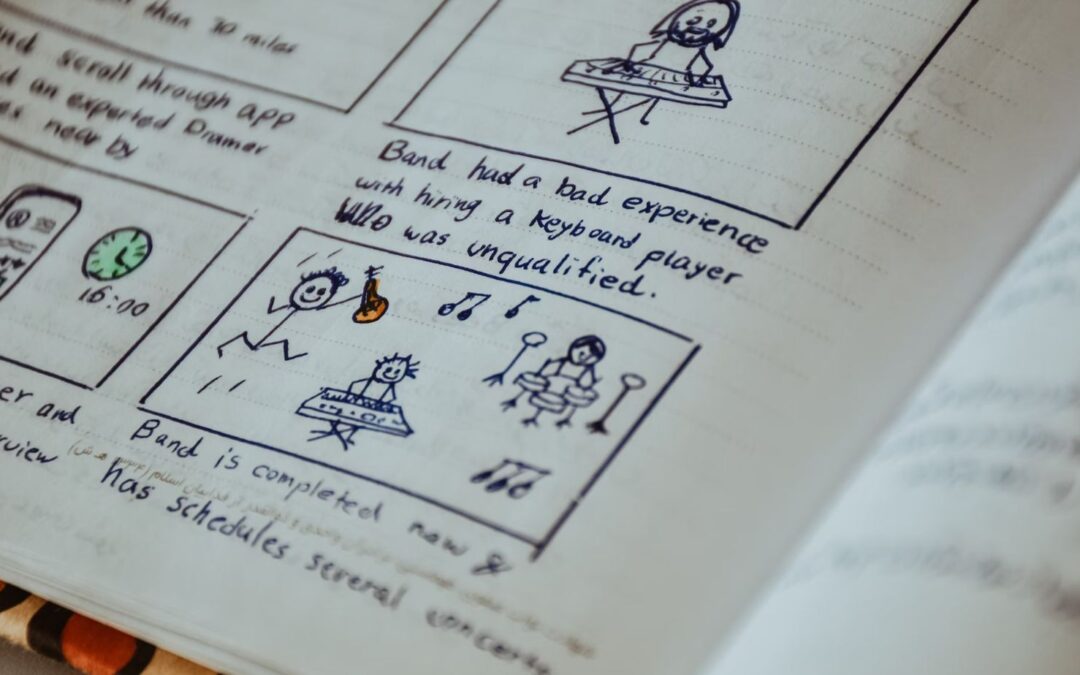In education, the introduction of storyboarding as a pedagogical tool is revolutionizing classroom dynamics. Originally a mainstay in the film and animation industries, storyboarding presents an engaging way to visually organize thoughts and narratives. This technique has shown its potential to enhance students’ learning experiences by merging creativity with educational structure.
It is an effective means to cater to various learning styles while fostering essential skills such as critical thinking, collaboration, and communication. Plus, teachers can use a storyboard template to implement this tool in their lessons quickly and easily.
But what makes storyboards so beneficial for learning? How can you use them and for what subjects are they the most suitable? We’ll answer these questions and more in this article.
Understanding Storyboarding
Storyboarding, at its core, is a visual representation technique used to convey a story. It involves sketching out scenes on panels, sequentially arranged to depict the flow of a narrative. This method is particularly effective in breaking down complex stories into manageable parts, making them easier to understand and remember.
In an educational context, it translates into a series of drawings or images, each panel capturing a key concept or part of a lesson, accompanied by brief explanatory notes. Although these sketches were traditionally done on paper, there are various digital tools available today that allow us to adapt this practice to a mode modern setting. Plus, teachers can use premade templates to help students understand the method quickly.
The Educational Advantages of Storyboarding
Integrating storyboarding into classroom activities offers multifaceted benefits:
● Creative Engagement: Students are encouraged to think creatively, translating abstract concepts into concrete visual representations.

● Improved Communication: Storyboards require students to articulate their thoughts clearly, enhancing their ability to communicate ideas.
● Simplified Conceptualization: Complex subjects become more digestible when broken down into storyboard panels.
● Encouragement of Collaboration: Group storyboard projects foster teamwork and the exchange of ideas among students.
● Diverse Learning Support: This approach accommodates different learning styles, including visual, auditory, and kinesthetic learners.
Implementing Storyboards in the Classroom
Effectively integrating storyboarding into classroom activities involves a few key steps:
- Present the Concept: Before giving the class a task that involves storyboards, educators should familiarize students with the concept and its origins. Demonstrating examples from various fields can provide a comprehensive understanding of its versatility.
- Establish Clear Goals: Define the objectives of the storyboard activity, whether it’s to illustrate a historical event, summarize a story, or explain a scientific concept.
- Foster Creative Freedom: Encourage students to explore various mediums for their storyboards, such as drawing, collage, or digital tools, allowing them to express their ideas uniquely.
- Incorporate Digital Tools: Utilize software and online resources designed for storyboarding, enhancing student engagement and digital literacy.
- Promote Teamwork: Assign group storyboard projects, enabling students to collaborate, share ideas, and learn from each other.
- Utilize as an Instructional Tool: Teachers can create storyboards for lesson planning and presentation, making complex topics more accessible and engaging.
- Provide Constructive Feedback: After completing storyboards, organize presentations and feedback sessions. This encourages reflective learning and appreciation of diverse perspectives.
Ideal Subjects for Storyboarding Implementation
Storyboarding is particularly effective in certain subjects due to its visual and sequential nature:
● Literature and Language Arts: Ideal for summarizing plots, character analysis, and visualizing narratives.
● History and Social Studies: Useful for outlining historical events and timelines and exploring societal changes.
● Science: Effective in illustrating scientific processes, life cycles, and experimental procedures.
● Mathematics: Helpful for visualizing problem-solving steps and conceptual theories.
● Art and Media Studies: Naturally suited for planning art projects and analyzing media content.

This technique can also be adapted to various other subjects, enhancing learning through visual representation and creative expression.
Final Say
Storyboarding in the classroom is more than just an artistic endeavor; it’s a comprehensive tool that enhances the educational experience. By bridging the gap between visual arts and academic learning, storyboards offer a unique platform for students to engage with course material actively.
This approach not only enriches their understanding but also equips them with crucial life skills like creativity, problem-solving, and effective communication. As educators continue to explore and implement this technique, the landscape of teaching and learning is poised for a creative and clarifying transformation.
Jessica has a flair for writing engaging blogs and articles. She enjoys reading and learning new things which enables her to write different topics and fields with ease. She also strives to break down complex concepts and make them easy for anybody to comprehend.





